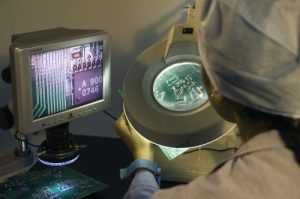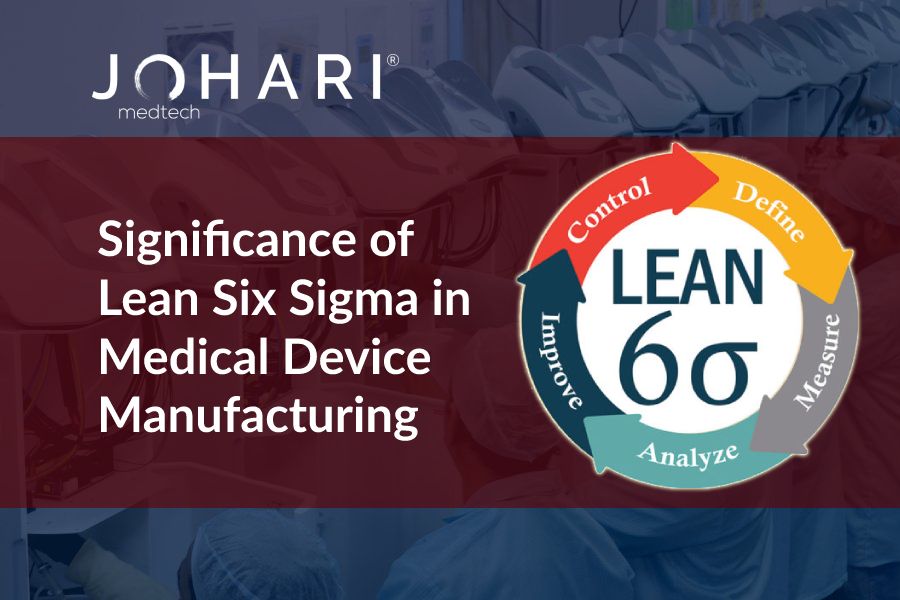Every organization works with a set of processes that require continuous nurturing and update for maximum productivity. It’s necessary to align efforts in the right direction to ensure higher productivity, optimized cost and minimal waste.
Implementation of Lean Six Sigma principles at every level in a Manufacturing organization helps in filtering cumulative waste over a period of time. The measures adopted under the Lean Six Sigma methodology keep the system healthy and evolving with changing requirements.
Lean Sigma is a supplement for manufacturing facility to stay healthy with minimal overheads and wastage.
History of Lean Six Sigma in Manufacturing
This production philosophy was widely known as the Toyota production system in Japan. It was only in 1986 that Womack and Jones (1990) labeled it as “Lean Production and Lean thinking”. The term Lean was used by John Krafick (1988) to describe the new production techniques that were used at Toyota.
Krafcik concluded, “The system needs less of everything to create a given amount of value, so let’s call it Lean.”
Significance of Lean Six Sigma in Medical Device Manufacturing
Businesses need to cut unnecessary expenses. With every new upcoming project, there are new challenges to encounter. It’s mandatory to have a system that evolves and is more process oriented & independent. Eliminating junk manufacturing exercises maximizes productivity and output.
Lean manufacturing refers to a practice meant for optimizing the product development cycle and excessive unused resources, defects and repetitions. Different cases from history reveal its success in keeping the system dynamic, evolving and productive.
How do we implement Lean six sigma principles at Johari Digital Healthcare Ltd.?
Operations
- Removing defects
- Minimizing Cycle Time
- Minimize the downtime
- Enhanced skillset and equipment effectiveness


Supply Chain
- Improve supply chain efficiency
- Optimize the inventory & logistics
- Enhance the supplier quality
- Optimize the lead time
Human Resources
- Optimize hiring time & cost
- Incorporating relevant training modules
- Enhance business development & management

Quality Assurance
Application of Lean principles in Quality Management System is divided into three steps.
Step 1. IQC: Initial Quality Control
Initial Quality Control involves numerous steps including:
- Raw Material Testing
- Supplier audits
- Machinery Testing
- Personnel training and upgrade
Step 2. IPQC: In-Process Quality Control
- Continual Risk Management
- CAPA (Corrective Action Preventive action)
- Documentation (DHR/DMR)
Step 3. FQC: Final Quality Control
Final Quality Control involves numerous steps including:
- Functional Testing
- Mechanical Testing
- Pre-Dispatch Inspection
Case: Resolving Delayed Deliveries due to Supply Chain Disruptions
Problem Statement
· Several of our consignment deliveries were delayed due to the supply chain disruptions during COVID-19. The shortage of semiconductors, Collibri (T-20 & VF-50), SMPS Transformer parts and Sheet metal parts due to scarcity of O2 & N2 affected the overall electronic medical device manufacturing landscape
· Transportation delays due to frequent border seal affected material/product reach to the required zones. The shipments took much longer than usual, the duration of the deliveries increased manifolds
Actions taken to resolve the Issue
We took several measures to facilitate timely deliveries of consignments.
- Pre-planning & Inventory Management with prioritization as per the project criticality at clients’ end
- Management of component obsolescence to ensure that used components in the design are easy to procure and are cost effective
- Identify and validate vendors across the globe to ensure continual supplies in the face of sudden scarcity of raw material
- Ensure prompt and transparent communication between different stakeholders to set & meet realistic expectations
Outcome
- · The turnaround time for the end customers was reduced
- · Our Global Clientele portfolio expanded rapidly
- · Retained our clients and delivered consignments within the stipulated timelines
Elements to Eliminate in Lean Six Sigma
#1. Defective Products
Reducing product errors over time is a necessary principle under Lean six sigma manufacturing.
#2. Overproduction
Often the sales team does not give a proper projection of what lies ahead. In such a condition, often production is more than required. The unmovable inventory takes space and often becomes a bottleneck for fulfilling actual requirements.
#3. Waiting Time
Often, clients have lead times. It is imperative to know where things are headed. Being realistic saves time and provides a higher level of clarity.
#4. Non-utilized Talent
Channelize your work-to-employee ratio. It’s important to remain realistic about how many people you require to complete the task. Keep human resources efficient with continual training and optimum utilization.
#5. Over Processing
Doing more than necessary looks like something to aspire for. But, in Medical Device Manufacturing it may backfire in several cases. Over processing adds an extra cost which eventually dissolves the purpose.
#6. Not upgrading
Lean Six Sigma Manufacturing says that one needs to update the Equipment, Machinery, and Resources according to time. In case when you fail to upgrade, you may feel lost after a certain point. It is extremely important to upgrade facilities and machinery according to the projects.
Key principles of Lean Six Sigma in Manufacturing
Outline Value
It is important to articulate the value of the product or service that adds to the buyer’s life. With numerous similar technologies entering a single segment it has become imperative to articulate the key benefits of the Lean six sigma manufacturing.
Create Flow
Remove the steps from value stream and make sure that the work is divided and cross functional. Some key strategies for value added activities include:
- Breaking down the steps
- Realigning the production steps
- Creating cross functional departments
- Employee training to make them multi skilled & adaptive
Pursuing Perfection
An organization must be a learning organization. The company should be a learning organization and it must become better each day. Not being open to learning & development, an organization may lose touch with its key USPs.
Operational Excellence with Lean Six Sigma
Operational excellence refers to the management practice aimed at creating a workplace with continual improvements. All the activities together form a framework that maximizes the outflow and limits the waste produced.
Conclusion
Rapid growth, entry of new players and use of advanced Technologies across diverse medical device segments has transformed the Medical Device Industry into a cost competitive landscape.
We at Johari implement Lean practices to make our processes efficient, reduce wastage and optimize the manufacturing cost for quick and successful Go-to-Market of your medical device.
Get in touch with Johari Digital Healthcare to explore seamless Medical Device Manufacturing.

